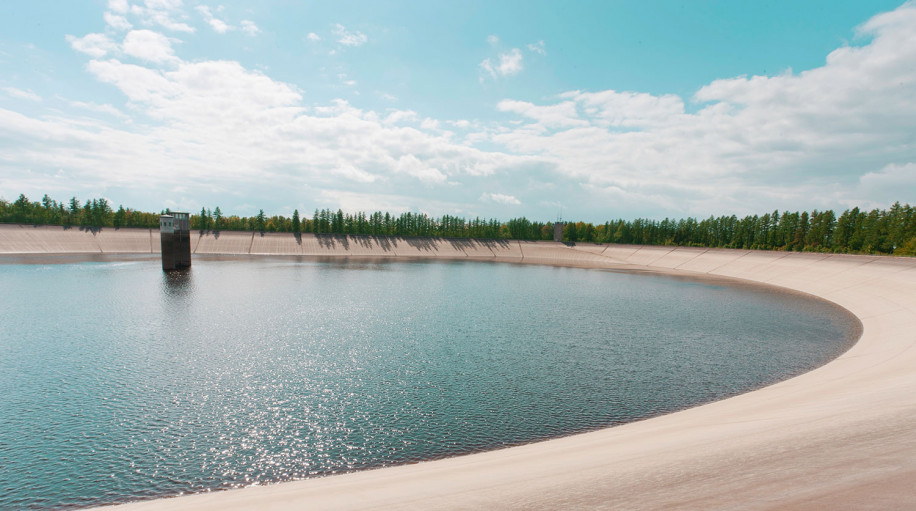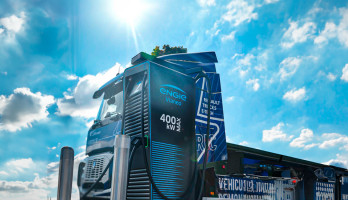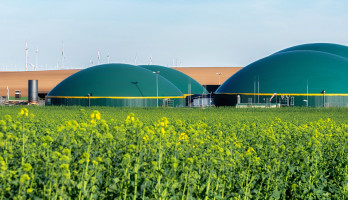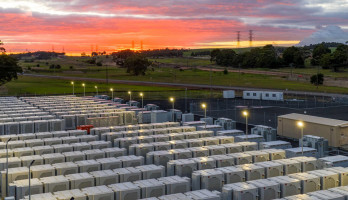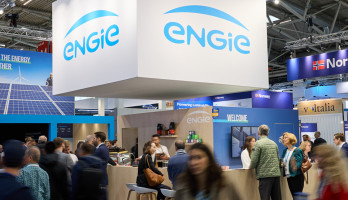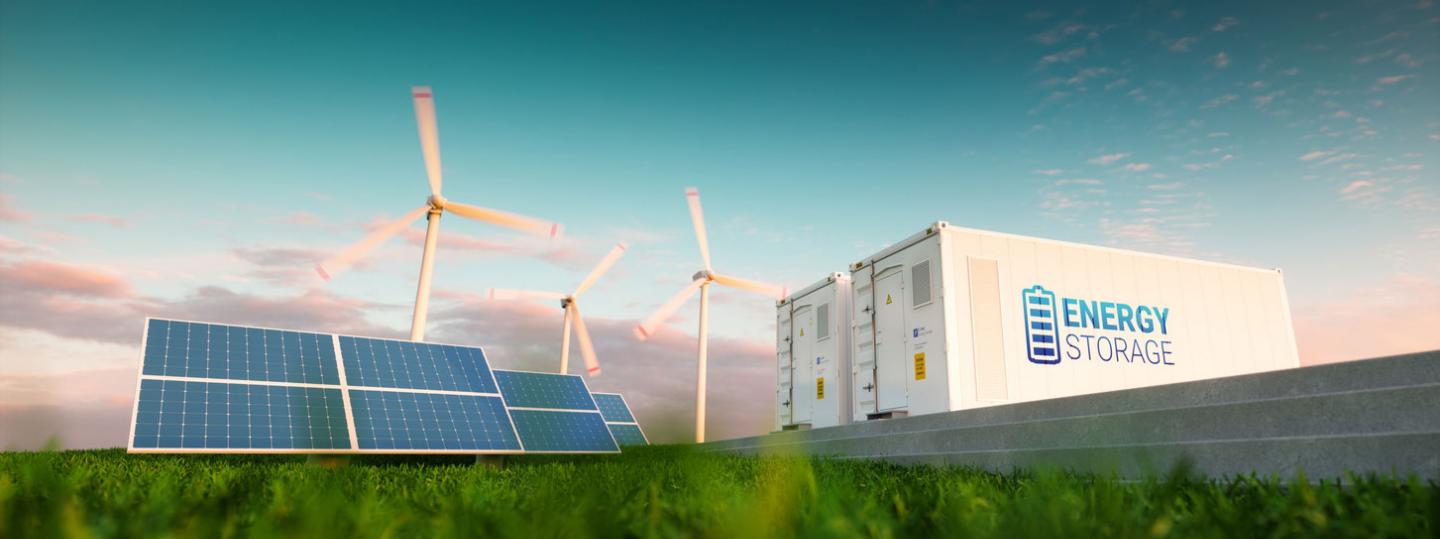
Storage Technologies: Key factor and game changer for the energy transition
In addition to the further expansion of renewable energies, efficient and reliable storage technologies play a key role in the success of the energy transition. In view of the steadily growing share of volatile energy from sun and wind, two challenges – balancing the differences between generation and consumption and supporting the stabilization of the grid with the help of powerful and reliable energy storage systems – are coming into even sharper focus.
With regard to both the electricity and heating markets, the following applies: For the CO2-neutral future of our energy system, innovative storage technologies are the game changers par excellence. It is only through them that the transformation from pure energy production from renewable sources to a flexible and demand-driven energy supply becomes possible. The accelerated construction of a sustainable infrastructure for energy storage is all the more necessary because Germany is already supposed to be climate-neutral in 2045 with regard to the stricter climate protection law. Which storage solutions are being used successfully in which applications today? What storage technologies of the future are already in the starting blocks? We have summarized the answers for you in this article.
Storage technologies for both short-term and long-term energy storage
Various time horizons have to be taken into account in the storage and subsequent supply of renewable energies in terms of their volatility. Depending on the current weather as well as the longer-term climate, the additional energy demand is subject to strong short-term as well as seasonal fluctuations. This needs to be balanced using appropriate storage technologies. In principle, storage solutions therefore distinguish between short-term and long-term storage:
- Quick-to-use short-term storage systems such as batteries, flywheel and compressed air storage systems or pump storage systems can store and supply energy several times in a day. They are normally used as power storage devices in seconds to minutes, or as shifting storage devices in minutes to hours. In addition to smoothing short-term fluctuations and providing control power, they are used to balance typical daily patterns, for example in PV systems.
- Long-term storage systems, usually with significantly higher capacities, such as heat storage systems, large storage hydropower plants or chemical storage systems (power-to-gas), enable energy storage over several days, weeks or even longer cycles and function as a longer-term or seasonal backup.
Modern battery storage systems for diverse applications in households, industry and mains operation
From the Volta column to lead batteries and lithium-ion technology: Battery storage systems already look back on a history of more than 200 years and, thanks to their diverse applications and expected cost reductions, are regarded as central building blocks for the electricity system of the future. Whether
- in households or neighborhoods for the temporary storage of PV electricity,
- for the installation and expansion of emission-free electric mobility,
- in industry and commerce, to reduce electricity purchase costs via peak shaving and to generate additional revenues on the balancing energy market; or
- at the level of the network service providers for the regulation and stabilization of the network operation with precision in seconds:
With the flexible integration of renewable energies, battery storage systems open up modular, easily scalable and quickly usable solutions that already make a significant contribution to the energy transition. In view of the growing share of wind and solar power, they will become even more important for the continuous energy supply in the future.
Mechanical energy storage: Driving the energy transition with Isaac Newton
Mechanical energy storage use the principles of classical Newtonian mechanics for energy storage in potential and kinetic form or in the form of pressure energy. These storage technologies include not only pumped-storage power plants and compressed air storage devices but also the so-called flywheel or flywheel mass storage devices.
Pumped-storage power plants
In use in Germany for more than 100 years, pumped-storage technology is regarded as a proven technical solution and as the only storage technology at present with which electricity can be stored on a large scale. Pumped-storage power plants play an increasingly important role in the energy transition, in particular in the supply of control energy for providing peak load current and for stabilizing the networks in the event of unexpected fluctuations. For example, a typical pumped storage system can store energy for many hours to several days, depending on the reservoir. However, in Germany, where approximately 9.6 gigawatts of net power are currently available through pumped storage, the expansion potential is limited.
Compressed air reservoir
Excess electricity from renewable sources can also be used in compressed air storages to press air into salt domes or gas caverns, for example. In addition to recycling the compressed air via a turbine for power generation, in adiabatic compressed air storages, the heat generated during compression is also transferred into a heat accumulator. Until now, however, compressed air storage technology has hardly been used on a large scale, since the achievable efficiencies are significantly lower than in other storage technologies.
Flywheel/flywheel mass storage
Flywheel or flywheel mass storage devices convert excess electrical energy into mechanical rotational energy. As efficient short-term storage devices with a very high power density and cycle stability, these energy storage devices are generally used to buffer power and load peaks. Nevertheless, they play only a secondary role in the energy system due to their high standby losses and costly cooling during operation.
Improving the efficiency of renewable energies with thermal energy storage
The significance of thermal energy storage systems for the energy transition is not to be underestimated: After all, the heating market accounts for around 56 percent of total German energy consumption. In particular, the use of surplus electricity for conversion into heat, for example in heat pumps in households or in power-to-heat plants on an industrial scale, is becoming increasingly important and can make a significant contribution to optimizing the degree of utilization of renewable energies.
The thermal storage technologies have a very wide range and heterogeneity, each of which predestines them for different areas of application:
- Short-term heat storage systems with a storage period of up to two days serve to compensate for heat supply and demand at short notice. They are preferably used as solar or industrial water storage tanks and are used in industry in the form of steam storage tanks for process heat.
- Buffer storage tanks, which can also store energy on an hourly or daily basis, are very often used in solar installations, heat pumps or in combined heat and power plants (CHP). With their stored heat, they ensure, among other things, that the heating system or the heat generator has to start up less frequently. Buffer storage thus solves the problem that the demand for produced electricity and generated heat from combined heat and power plants often does not occur simultaneously and increases the efficiency and effectiveness of the entire plant.
- However, long-term heat storage systems are able to maintain their thermal energy for several months without great heat losses. During the summer months, for example, heat produced with solar or geothermal energy can be stored until winter. In the context of seasonal storage technologies, various sizes are used which can supply individual houses, residential neighborhoods, commercial and industrial customers and even entire settlements via local and district heating networks.
Power-to-gas as a relevant storage technology of the future
Power-to-gas describes both a generation and storage technology as well as an energy management concept, in which temporary electricity surpluses from renewable sources are used to produce green hydrogen and methane. Power-to-gas is seen as a key technology for the further flexibility of our energy supply system, especially in view of the third phase of the energy transition, when the share of renewable energies reaches a share of 60 to 70 percent of the electricity mix.
Among other things, the fuel gas produced during electrolysis can be
- stored over long periods,
- fed partially (hydrogen) or completely (methane) into existing natural gas networks,
- used in fuel cells for reconversion to electricity
- serve as raw material for chemical further processing (power-to-chemicals) or
- be used as a fuel in transportation (power-to-fuel).
With regard to energy storage, pumped storage is currently the cheapest technology as a long-term solution, yet experts expect that power-to-gas projects can be operated economically within ten to twenty years. Germany is already comparatively broadly positioned with over 35 plants producing and storing RE gases. However, the industry is struggling with various barriers to entry, which slow down an accelerated expansion. This includes, for example, the classification of power-to-gas plants as final consumers, which results in numerous charges, levies and surcharges for electricity used. To a considerable extent, this means that plants cannot currently be operated profitably without subsidies.
How can hydrogen be stored in large quantities as an energy reservoir?
According to the German Association of Gas and Water Companies (DVGW), the use of power-to-gas technologies for the seasonal storage of energy is almost without alternative today. With a view in particular to the storage of large amounts of green hydrogen, pilot projects such as STOPIL in the Storengy storage in Étrez, France, are therefore investigating to what extent natural salt caverns are suitable for the underground storage and storage of the gas.
Conclusion: Improve framework conditions for the use of storage technologies
The contribution of storage technologies to the success of the energy transition cannot be overestimated and requires further political prioritization and design. With the adoption of the National Hydrogen Strategy (NWS) in mid-2020, the support for the project "H2 Global" recently approved in the supplementary budget, and the investment pact for "climate-friendly production in Germany" within the scope of the current amendment of the Climate Protection Act, the legislature has already set the appropriate course in a number of places. However, further regulation and a clear regulatory framework are also needed to promote the economy of innovative and much needed storage technologies.
Our Expert

